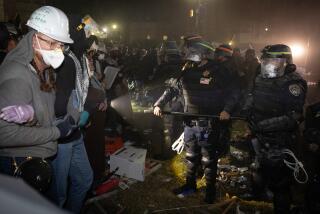The North’s Drinking Straw
Back in 1931, as water engineers and state lawmakers plotted the transfer of huge amounts of Northern California water to San Joaquin Valley farms and Southern California cities, they could not have imagined that little Solano County would boom from 41,000 residents to more than 400,000 today. They felt secure in promising Solano and other northern counties they could have their water back if they ever really needed it. The unspoken belief was that they never would.
Thus the Legislature in 1931 passed the state’s first “area-of-origin” law. It was expanded from counties to cover entire watersheds in 1933 and became a key provision of the State Water Project in the late 1950s. The area-of-origin laws were essential to offset opposition to the $1.75-billion bond issue in 1960 that financed the start of construction.
Now, the north is striking back. The Times’ Nancy Vogel reported last Sunday that the growing cities of Fairfield, Benecia and Vacaville in Solano County, east of San Francisco Bay, have petitioned the state Water Resources Control Board to regain rights to 31,620 acre-feet of water, enough to serve 155,000 people a year.
That is a fraction of the nearly 5 million acre-feet that are collected from the northern mountains and moved south of the Sacramento-San Joaquin Delta by the pumps and canals of the State Water Project and its companion federal project. But more such petitions are expected, Michael Jackson, an attorney for northern counties, told Vogel, because those areas “are running out of water for growth.”
The issue is important to Southern California because the Metropolitan Water District, which wholesales water to six counties including Los Angeles and San Diego, is the state project’s biggest customer. MWD Deputy General Manager Tim Quinn says the area-of-origin issue will force cuts in the south’s supply, “but we have to honor the deal we struck half a century ago.” Add to this a previous agreement that Southern California will limit its take on the Colorado River to about 10% less than the nearly 5 million acre-feet it uses now and the future appears even more uncertain.
Part of the solution is completing a deal to transfer more than 200,000 acre-feet of Colorado River water from Imperial County farms to San Diego County for home and business use. There’s also no certainty that Fairfield, Benecia and Vacaville will get the whole 31,600 acre-feet. Some question whether they really are in the Sacramento River watershed. There is dispute over some wording in the law. And the three cities will have to devise a way to get the water to homes and businesses. The state water board hearings, beginning in June, are expected to be complex and protracted. But the big picture is already clear.
Seven decades ago, when valley farmers and Southern California began coveting the north’s water, they agreed they would take only “surplus” or “excess” water. The awakening of the area-of-origin issue tells us that we’ve used up any surplus or excess. Any “new” water will have to come primarily from techniques such as buying from farmers, conservation, recycling and the development of practical desalination plants.
This will be politically and technically difficult. It will be costly. But it is the only basis on which California can plan a sound economic future.
More to Read
Get the L.A. Times Politics newsletter
Deeply reported insights into legislation, politics and policy from Sacramento, Washington and beyond. In your inbox three times per week.
You may occasionally receive promotional content from the Los Angeles Times.






